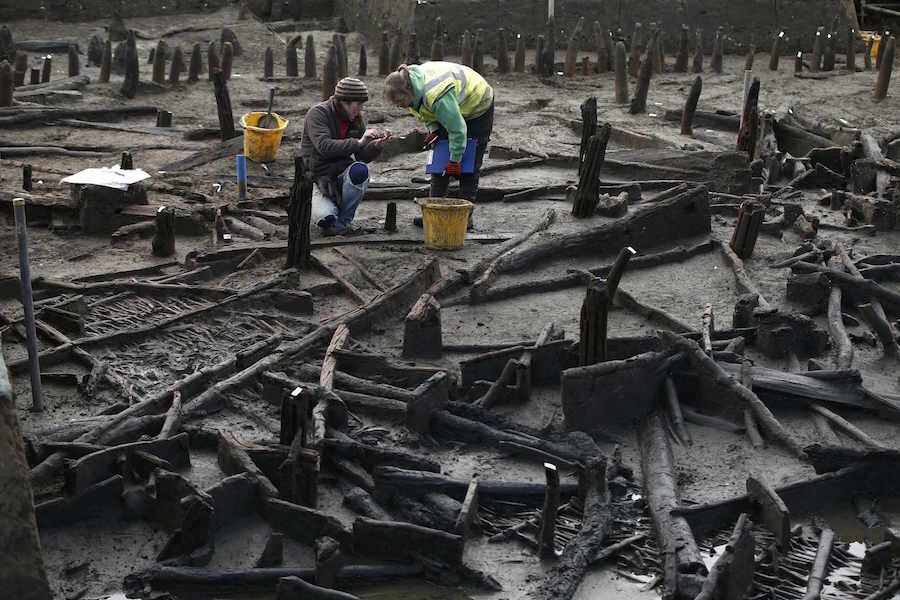Britain's little 'Pompeii' found preserved in river silt
Loading...
In a murky quarry in Cambridgeshire County, a team of archeologists is excavating what has been deemed the “Pompeii” of Britain.
The archaeological excavation has unearthed the remains of several Bronze Age dwellings, along with pottery, jewelry, and other remnants of everyday life. The wooden structures and contents collapsed into a river, where silt helped preserve them to a remarkable degree. Footprints made when the ruins were still homes remain visible in the quarry ground.
The settlement appears to have been home to several families living in circular stilt houses. A fire destroyed the settlement, according to the University of Cambridge. Few human remains have been found so far.
The carbonized wooden beams, ceramics, and other remains scarcely resemble the calcified human figures of Pompeii buried in the ash of Mount Vesuvius, but Britain’s “Pompeii” offers archeologists a similar moment frozen in time with clues into the everyday life in Britain's Bronze Age, from about 1200 to 800 BC.
“Usually at a Later Bronze Age period site you get pits, post-holes and maybe one or two really exciting metal finds,” David Gibson, archaeological manager at the Cambridge Archaeological Unit, said in the University of Cambridge release. “But this time so much more has been preserved – we can actually see everyday life during the Bronze Age in the round. It’s prehistoric archaeology in 3D with an unsurpassed finds assemblage both in terms of range and quantity.”
The exposed remnants of one of the stilted wooden roundhouses are clearly visible. The timbers have tool marks and a series of wooden posts marks a palisade that once enclosed the area, according to the University of Cambridge.
Further down in the quarry, which is a little over six feet below ground level, where the river bed would have been between 1000-800 BC, textiles made from lime tree bark and other plant fibers have been identified. Small cups, bowls, and jars, some of which still contain past meals have also been found, providing a look into the ceramics of the time and the food eaten, university researchers report.
A necklace found at the site also exposed inaccuracies with the level of sophistication associated with the British Bronze Age. Exotic glass beads were found to form an elaborate accessory.
Recently, a human skull was found at the site, but further analysis is needed before experts can determine if the skull belonged to a person who died in the fire or from other causes, according to Gizmodo.
In total, the excavation site stretches over 1,100 square meters. The excavation is led by archaeologists with the University of Cambridge and funded by the organization Historic England.
The site has been known about for years, but this is the first large-scale excavation of it. The four-year project was agreed to after experts became concerned with the long-term preservation of the site, which is now a clay quarry.
“We are learning more about the food our ancestors ate, and the pottery they used to cook and serve it … This site is of international significance and its excavation really will transform our understanding of the period,” Duncan Wilson, chief executive of Historic England, told Discovery News.






